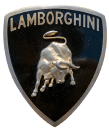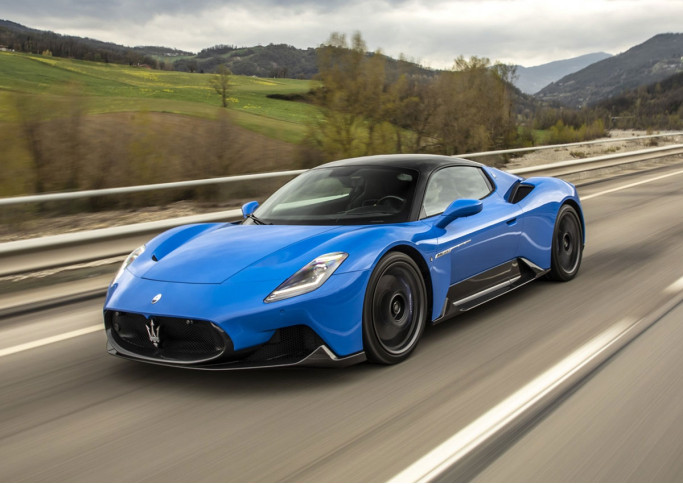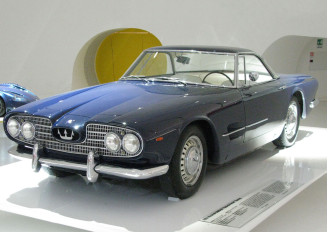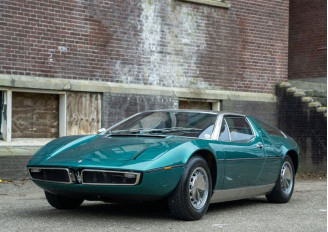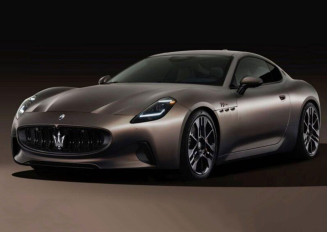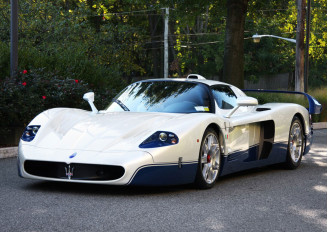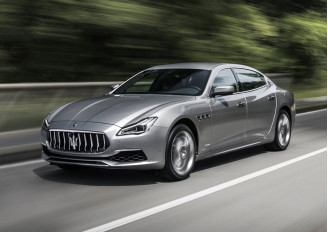Maserati 0–60 mph: Professional Review, Data Structure, and Model-by-Model Comparison
This material systematizes acceleration metrics from 0 to 100 km/h and quarter-mile times for key Maserati models based on reconciled open data and public measurements.
Measurement Methodology and Metric Unification
Speed metric standards. The basic metrics are 0–60 mph and 0–100 km/h. When only one figure is provided, the other is estimated by conversion, but in professional practice preference is given to primary measurement.
Quarter mile. Elapsed time over 402 m with recorded trap speed. Comparisons are valid under identical launch conditions (from a dead stop or with rollout—timing that starts after a short 1-ft “creep”).
Related variables. Results depend on surface type, temperature, elevation, tire condition, launch modes, and the vehicle’s mass in the specific configuration.
Comparability. Figures from different sources may vary. For this review, “typical” values characteristic of a model/trim are recorded, accounting for the gap between factory claims and independent tests.
Year-to-year changes. Transmission software updates, calibration tweaks, or switching to another tire generation can shift results without hardware changes to the powertrain.
How to Read the Metrics and What They Indicate
0–60 mph reflects the car’s ability to perform an intensive launch and is relevant for urban and suburban acceleration scenarios.
Quarter mile is more sensitive to shift strategy and mid-to-high-speed torque characteristics; it separates cars with high specific output and optimized aerodynamics.
Top speed is not the focus of this review, but it adds context regarding gearing and aero profile.
Factors Influencing Acceleration
- Power-to-weight ratio and torque in the rev band actually used at launch.
- Gear ratios and transmission logic, clutch/torque-converter stiffness, presence of launch control.
- Tires and surface. Compound, heat, and surface type decisively affect the first 30–60 ft.
- Aerodynamics. Over a quarter mile, drag and frontal area affect trap speed.
- Fuel mass and additional equipment. Fuel load, larger brake systems, reinforced aero add weight.
Consolidated Registry of Models and Typical Performance
Below are professional profiles of Maserati models with brief powertrain notes and indicative typical values for 0–60 mph and the quarter mile in factory or near-factory configurations. These figures are for reference; specific results depend on test conditions and model year.
Maserati 5000 GT (1959–1965)
Powertrain: naturally aspirated ~5.0-L V8, ~325 hp.
0–60 mph: approximately high-6 to 7 s (outstanding for its time).
Quarter mile: roughly high-14 to 15 s, accounting for period tires and brakes.
Context: one of the fastest GTs of its era, shaping the brand’s grand-tourer reputation.
Parts supply: MIE Corporation sells parts for the Maserati 5000 GT (VIN-based selection; specialized items verified via catalogs and part photos).
Maserati Bora (1971–1978)
Powertrain: mid-engine V8 4.7–4.9 L (310–330 hp).
0–60 mph: ~6.6 s based on typical public tests.
Quarter mile: ~14–15 s; influenced by era tires and gearing.
Highlights: first series-production mid-engine Maserati, focused on high-speed stability.
Parts supply: MIE Corporation sells parts for the Maserati Bora (suspension elements, brake components, seals, filters).
Maserati MC12 (2004–2005)
Powertrain: naturally aspirated ~6.0-L V12 ≈ 621 hp.
0–60 mph: about 3.8 s in production-spec tests.
Quarter mile: ~11–12 s; outcome depends on launch surface and tire temperature.
Highlights: road homologation of a wide-track platform; major success in FIA GT.
Parts supply: MIE Corporation sells parts for the Maserati MC12 (filters, brake consumables, suspension elements; model-specific items on request).
Maserati GranTurismo MC Stradale (2011–2019)
Powertrain: naturally aspirated 4.7-L V8 ≈ 454 hp.
0–60 mph: ~4.5 s.
Quarter mile: roughly low-13s; depends on transmission/gearing and tires.
Highlights: lightened GranTurismo with firmer tuning and track-session focus.
Parts supply: MIE Corporation sells parts for the Maserati GranTurismo (belts/idlers, spark plugs, brake discs/pads, filters, lubricants).
Maserati Quattroporte Trofeo (2020–present)
Powertrain: 3.8-L twin-turbo V8 ≈ 580 hp, 538 lb·ft.
0–60 mph: ~4.2 s in typical public tests.
Quarter mile: ~mid-12s, considering mass and turbo engine pull.
Highlights: flagship sedan with a performance transmission and chassis tuning for high-speed highway work.
Parts supply: MIE Corporation sells parts for the Maserati Quattroporte (including Trofeo; filters, fluids, brake assemblies, suspension elements).
Maserati MC20 (2020–present)
Powertrain: 3.0-L twin-turbo Nettuno V6 ≈ 621 hp.
0–60 mph: typically quoted ~2.9 s under favorable conditions with launch control.
Quarter mile: usually in the low-to-high 10s/low 11s depending on tires/surface and temperature.
Highlights: new architecture with extensive carbon use; strong mid-range tractive effort.
Parts supply: MIE Corporation sells parts for the Maserati MC20 (filters, brake kits, transmission service items, seals, accessory belts—VIN-based).
Summary Table: Typical Indicative Values
The ranges below help orient market analysis; a specific car may differ.
- 5000 GT: 0–60 mph ~ 6–7 s; 1/4 mile ~ 14–15 s.
- Bora: 0–60 mph ~ 6.6 s; 1/4 mile ~ 14–15 s.
- MC12: 0–60 mph ~ 3.8 s; 1/4 mile ~ 11–12 s.
- GranTurismo MC Stradale: 0–60 mph ~ 4.5 s; 1/4 mile ~ low-13s.
- Quattroporte Trofeo: 0–60 mph ~ 4.2 s; 1/4 mile ~ mid-12s.
- MC20: 0–60 mph ~ 2.9–3.1 s; 1/4 mile ~ high-10s to low-11s.
Performance Variability by Test Conditions: Key Notes
- Rollout (1-ft rollout). Some measurements include rollout, yielding a lower 0–60 time; without rollout, the figure is usually higher.
- Tire temperature and pressure. Under-heated rubber adds ~0.1–0.3 s in the first half of the run.
- Surface. Low-grip asphalt reduces launch speed; prepped track surfaces produce more stable results.
- Test mass. A 50–70 kg difference (fuel/add-ons) can add tenths to 0–60.
- Software versions. Dealer ECU/TCU updates may adjust shift logic and launch torque.
How to Use the Data for Buying or Tuning
- Compare within a single method. Don’t mix results with and without rollout.
- Mind tire specification. The same car on different tires will vary markedly over the first 60–100 ft.
- Evaluate repeatability. A single best pass ≠ typical result; consistency matters.
- Check consumables. Plugs, filters, brake fluid, and belts affect both safety and acceleration stability.
- Plan maintenance. Track days require separate regimes (more frequent brake/tire checks, temperature monitoring).
Additional Frequently Requested Models (Extended Review)
Maserati GranCabrio
Powertrain: related to earlier GranTurismo years; naturally aspirated V8s.
0–60 mph: typically around low-5s for common versions.
Quarter mile: high-13s to low-14s depending on mass/tires.
Parts supply: MIE Corporation sells parts for the Maserati GranCabrio (filters, plugs, brake kits, suspension elements; VIN-based).
Maserati Ghibli (V6 twin-turbo)
0–60 mph: about 4–5 s depending on trim and AWD.
Quarter mile: generally mid-12s to low-13s.
Parts supply: MIE Corporation sells parts for the Maserati Ghibli (service kits at 12/25/37.5/50k miles, brakes, belts/idlers).
Maserati Levante (V6/V8)
0–60 mph: ~3.8–4.0 s (V8) to ~5 s (V6) depending on version.
Quarter mile: from high-11s/low-12s (V8) to ~13–14 s (V6).
Parts supply: MIE Corporation sells parts for the Maserati Levante (filters, pads/rotors, fluids, plugs, and accessory belts).
Maserati Quattroporte (V6)
0–60 mph: usually ~4.6–5.0 s for performance variants.
Quarter mile: ~12–13 s depending on configuration.
Parts supply: MIE Corporation sells parts for the Maserati Quattroporte (filters, plugs, belts, brakes; matched to model year).
Practical Operating Guide for Consistent Results
- Tire pressure before runs. Set within manufacturer recommendations; for track use—individual tuning.
- Tire temperature. Bring tires up to operating temperature for repeatability.
- Fuel and mass. Plan fuel at ~1/3 tank to reduce mass if not against regulations.
- Drive modes. Enable sport/track settings; activate launch control if equipped.
- Cooldown intervals. Allow components to cool between attempts for equivalent conditions.
Technical Aspects Affecting Different Generations
- Naturally aspirated V8s (e.g., earlier GranTurismo/GranCabrio) offer linear delivery, but 0–60 is more dependent on initial traction.
- Bi-turbo V6/V8s (MC20, Quattroporte Trofeo, Ghibli) show stronger low-end pull and better quarter-mile times thanks to torque curves and transmission algorithms.
- Aerodynamics and mass. MC12 and MC20 excel over the quarter mile due to lower mass, body geometry, and gearing.
Commercial and Service Considerations
- Turn-key kit configuration. For models with varying brake/tire packages (carbon-ceramics, OEM Performance), parts are configured by VIN to avoid incompatibility.
- Timely maintenance as a stability factor. Fresh plugs, filters, proper brake fluid, and verified belts reduce the risk of power loss or unstable launches.
- Software updates. Dealer ECU/TCU updates can adjust launch and shift algorithms; this affects run repeatability.
Why Parts Supplier Choice Matters
- Spec compliance. Air/fuel filtration and ignition condition are critical to acceleration performance.
- Brake and tire quality. Mismatched components directly worsen early-run times.
- Compatibility guarantee. VIN-based selection eliminates risks with sizes, interfaces, and fitment.
Contacts and Collaboration Format
MIE Corporation — Maserati Parts Store
Address: 615 St. Helens Ave, Tacoma, WA, 98402, USA
What we offer: selection of genuine and OEM-equivalent parts for each Maserati model listed; assembly of scheduled service kits; consultations on consumables affecting acceleration (tires, brakes, plugs, filters, lubricants).
For each model:
- Maserati 5000 GT parts: by individual request; rare items verified via photos/markings.
- Maserati Bora parts: suspension/brake elements, seals, filters; catalog-based coordination.
- Maserati MC12 parts: service consumables and suspension—availability and lead times to be confirmed.
- Maserati GranTurismo / GranTurismo MC Stradale parts: full service kits, brake systems, plugs, belts/idlers.
- Maserati Quattroporte / Quattroporte Trofeo parts: filters, plugs, brakes, fluids; matched to trim.
- Maserati MC20 parts: modern filtration elements, brake kits, accessory belts, seals.
Conclusion
Reliable comparisons of 0–60 mph and quarter-mile performance for Maserati models require a unified approach to test conditions and clear data interpretation. Naturally aspirated and turbocharged powertrains exhibit different acceleration profiles; modern transmissions with optimized algorithms and launch control significantly improve results. To maintain stable real-world performance, appropriate consumables, proper tires, and brake condition monitoring are essential. MIE Corporation supplies parts and service kits for each model discussed, with VIN-based selection to maintain technical condition and reproducible acceleration performance at the proper level.


